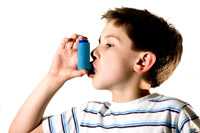Related Conditions

Studies have shown that individuals with disabilities are more likely than people without disabilities to report:
- Poorer overall health.
- Less access to adequate health care.
- Smoking and physical inactivity.
People with disabilities need health care and health programs for the same reasons anyone else does—to stay well, active, and a part of the community.
Although a smaller percentage than people without disabilities, most people with disabilities report their health to be good, very good, or excellent. Being healthy means the same thing for all of us—getting and staying well so we can lead full, active lives. That means having the tools and information to make healthy choices and knowing how to prevent illness. For people with disabilities, it also means knowing that health problems related to a disability can be treated. These problems (also called secondary conditions) can include pain, depression, and a greater risk for certain illnesses.
Disability and Obesity
CDC is working to identify, reduce, and prevent disparity in key health indicators, including obesity, among children, youth and adults with disabilities. Learn more about disability and obesity.
Secondary Conditions
People with disabilities often are at greater risk for health problems that can be prevented. As a result of having a specific type of disability, such as a spinal cord injury, spina bifida, or multiple sclerosis, other physical or mental health conditions can occur.
Some of these other health conditions are also called secondary conditions and might include:
- Bowel or bladder problems
- Fatigue
- Injury
- Mental health and depression
- Overweight and obesity
- Pain
- Pressure sores or ulcers
Click on the following links to learn more:
Bowel and Bladder
Some disabilities, such as spinal cord injuries, can affect how well a person’s bladder and bowel works.
Learn about bowel and bladder concerns for people with disabilities »
Fatigue
Fatigue is a feeling of weariness, tiredness, or lack of energy. Fatigue can affect the way a person thinks and feels. It can also interfere with a person’s activities of daily living.
Injury
Injuries—including unintentional injury, homicide, and suicide—are the leading cause of death for people 1 through 44 years of age. The consequences of injuries can include physical, emotional, and financial consequences that can affect the lives of individuals, their families, and society.

Mental Health and Depression
Mental health is how we think, feel, and act as we cope with life. People with disabilities report higher rates of stress and depression than people without disabilities. There are different ways to treat depression. Exercise can be effective for some people. Counseling or medication also might be needed.
Learn about depression »
Learn more about anixety and depression data »
Overweight and Obesity
Children and adults with disabilities are less likely to be of healthy weight and more likely to be obese than children and adults without disabilities. Overweight and obesity can have serious health consequences for all people.
Learn about healthy weight »
Learn about overweight and obesity »
Pain
Pain is commonly reported by people with many types of disabilities. For some, pain can affect functioning and activities of daily living. The length of time a person experiences pain can be classified as either long term (also called chronic) or short term.
Learn about pain associated with specific types of disabilities »
Pressure Sores or Ulcers
Pressure ulcers—also known as bed sores, pressure sores, or decubitus ulcers—are wounds caused by constant pressure on the skin. They usually develop on body parts such as the elbow, heel, hip, shoulder, back, and back of the head.
People with disabilities who are bedridden or use a wheelchair are at risk for developing pressure sores.
Other Concerns, Conditions, and Prevention
Many related health conditions and chronic diseases can be prevented. Chronic diseases are among the most common and costly of all health problems, even though many chronic diseases can be prevented. Some chronic diseases can be prevented by living a healthy lifestyle, visiting a health care provider for preventive care and routine screenings, and learning how to manage health issues. For more information and tools on other health conditions that are important to living healthy with a disability, click on the links that follow the text in each of the next sections.
Arthritis
Arthritis—or join inflammation—is the most common cause of disability among adults residing in the United States. It limits everyday activities for 24 million Americans. People with disabilities can be at greater risk of having arthritis.

Asthma
Asthma is a disease that affects the lungs. It is one of the most common long-term diseases among children, but adults can have asthma, too. Asthma is the most common chronic disease of childhood and a leading cause of disability among children.
Learn ways to manage and treat asthma »
Cancer
Getting screened for breast, cervical, and colorectal cancers as recommended helps find these diseases at an early, often highly treatable, stage. Research shows that women with disabilities are less likely to be screened for breast and cervical cancer within the recommended guidelines. Some reasons identified by women include encountering inaccessible facilities and equipment, and having to focus on other health issues.
Learn about cancer »
Learn about breast cancer screening for women with disabilities »
Chronic Fatigue Syndrome
Chronic fatigue syndrome (CFS) affects more than one million people in the United States. It is four times more common among females than males. People of both sexes and of every race and ethnicity and age (including adolescents) can develop CFS.
Learn about chronic fatigue syndrome »
Diabetes
Diabetes is a chronic disease for which care and treatment can help people to live normal and productive lives. However, some people might be limited in their everyday activities. People with diabetes, in general, report rates of disability that are significantly higher than those reported by the general U.S. population.
Flu
People with certain types of disability have a higher risk of getting flu-related complications, such as pneumonia. Some physical disabilities can affect how well their body fights off infection. They should discuss their risk of illness with their health care provider.
Heart Disease
Heart disease, also called cardiovascular disease, is the leading cause of death in the United States. Around 630,000 Americans die of heart disease each year. It is also a leading cause of disability.
Learning Disabilities
Learning disabilities are disorders that may affect a person’s ability to understand or use spoken or written language, do mathematical calculations, coordinate movements, or direct attention. Learning disabilities can be lifelong conditions and some people can have several overlapping learning disabilities. Other people can have a single, isolated learning problem that has little effect on their lives.
Learn about learning disabilities »
Limb Loss
Limb loss can occur due to trauma, infection, diabetes, vascular disease, cancer, or other diseases. Some children are born with limb loss or differences. Limb loss more often is the result—rather than the cause—of other health problems. However, loss of a limb can result in decreased physical activity, skin problems associated with using a prosthesis, and phantom pain for the residual limb.
National Limb Loss Information Center »
Amputee Coalition of America »
MRSA
Methicillin-resistant Staphylococcus aureus, or MRSA, is a type of bacteria that is resistant to certain antibiotics. MRSA, most often occurs among people in hospitals and health care facilities such as (nursing homes and dialysis centers) who have weakened immune systems. A person can get MRSA through direct contact with an infected person or by sharing personal items, such as towels or razors that have touched infected skin.

Musculoskeletal Disorders
Musculoskeletal disorders include problems such as back pain, joint injuries, tendinitis, and repetitive strain. Musculoskeletal injuries can cause temporary or even permanent disability, leaving some individuals unable to move around easily. Work-related musculoskeletal disorders are the leading cause of disability for people during their working years.
Learn about musculoskeletal disorders »
Nutrition (Healthy Eating)
Healthy eating is associated with reduced risk for many diseases, including the three leading causes of death in the U.S.: heart disease, cancer, and stroke.
Oral Health
Good oral health is important and can affect the health and well-being of a person’s life. Oral health is more than just having healthy teeth; for example, lifestyle behaviors, such as tobacco use, can affect general and oral health. Oral diseases and conditions are associated with other health problems as well. However, safe and effective measures exist to prevent the most common dental diseases.
Respiratory Virus
Respiratory syncytial virus—or RSV—is a virus common in childhood and important among older adults. RSV infects the lungs and breathing passages. Most otherwise healthy people recover from RSV infection in 1 to 2 weeks. However, infection can be severe among some people.
Learn about respiratory virus »
Substance Abuse
Alcohol, tobacco, illicit drugs, and prescription medications all can be substances of abuse. People with disabilities might have multiple risk factors that can increase their chances for substance abuse.
Learn about alcohol use »
Learn about substance abuse and people with disabilities »
Learn about fetal alcohol spectrum disorders and alcohol use during pregnancy »
Violence
Violence is a serious public health problem in the United States. People with disabilities are 4 to 10 times more likely to become victims of violence, abuse, or neglect than people without disabilities. Children with disabilities are more than twice as likely to be physically or sexually abused as children without disabilities.
Learn about violence prevention »
- Page last reviewed: August 3, 2017
- Page last updated: August 3, 2017
- Content source:




 ShareCompartir
ShareCompartir